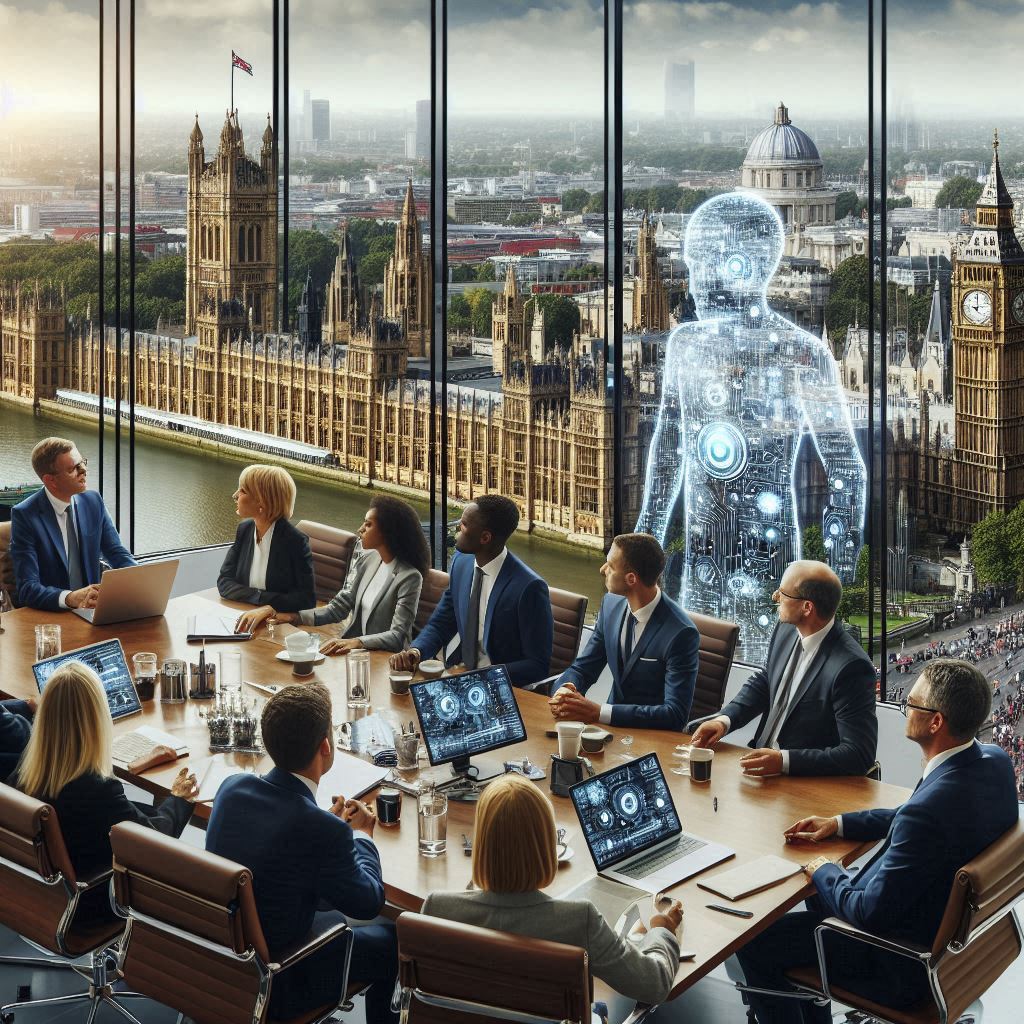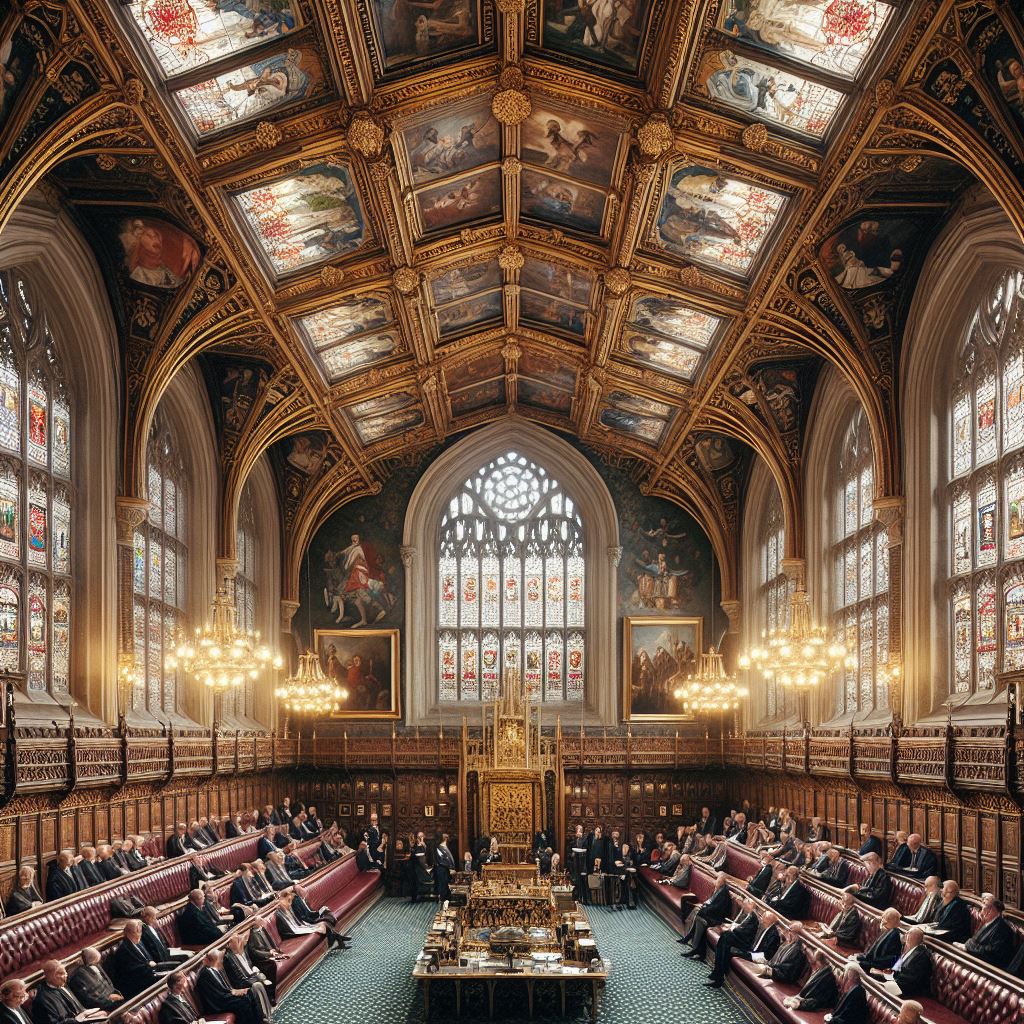Artificial intelligence is an emerging technology that is shaping the world around us. By interpreting large sets of information, locating patterns, and recommending solutions, AI is rapidly becoming a key tool across all industries in our economy. Over the coming decades, AI will become an increasingly important presence throughout our society.
Though largely a product of innovation in Silicon Valley in the US and its main competitor, China, there is an opportunity for countries across the globe to harness AI. Whether you look at economic policy, policing, healthcare, education, or the civil service, governments across the world are increasingly dependent upon different digital technologies, including AI.
Policymakers in the UK must seek to leverage AI to create solutions to our biggest challenges – including constitutional reform. This article will focus on how AI can be used to achieve the best possible outcomes when citizens and legislators come together to reform the way the government works.
AI and digital technology can be used to increase participation in the process of constitutional reform. It can also be used to increase the efficiency and the scope of constitutional research, while making literature on constitutional subjects accessible to a general audience. Finally, AI and digital technology can be used to increase the accountability of governments and public officials. Each of these points demonstrates the opportunities to improve constitutions and the way people interact with them that are offered by digital technology.
Giving the People a Say
One potential area that AI and digital technology can be utilized for constitutional reform is in the case of virtual constitutional conventions. Recent decades have seen numerous attempts to directly include the British people in political decision making. The Scottish Independence (2014) and Brexit (2016) referendums are the most obvious examples, but referendums on changing the voting system (2011) and North East devolution (2004) have also been held. Beyond referendums, there have been recent calls for constitutional conventions to decide the future of the UK constitution.
Policymakers and legislators must make opportunities to keep up with the private sector on emerging technologies through investment and reform
Constitutional conventions bring people from outside the political system into the political decision-making process. Although they allow broader participation than regular politics, constitutional conventions have often been exclusive to other kinds of elites. For example, the Australian constitutional conventions held between 1891 and 1900 and the Indian constitutional conventions in the late 1940s contained many people from beyond formal politics. However, they only broadened access to leaders from other elite fields such as academia, law, and occasionally science. Ordinary people were still excluded.
Social media can be combined with AI and digital identification to create virtual constitutional conventions. Entrance to special online forums can be controlled through the use of digital identification using a multi-factor system combining personal information and biometrics. This will ensure only British citizens are able to enter a UK virtual constitutional convention.
Tools familiar to social media users, such as multiple-choice polls and a live chat, could be used to assess public opinion on constitutional matters. AI chatbots could help individual citizens resolve uncertainties about technical terms and to analyse public sentiment in chat contributions.
Comparing Different Constitutions
In the world of constitutional research there is a concept called ‘comparative constitutionalism’. This means comparing different constitutions in different countries, allowing ideas about how to improve systems of government to be exchanged between different cultures. Comparative constitutionalism has received a lot of attention from researchers in the last decade. In an ever more connected world, the discourse between different countries about their constitutions is increasingly important.
Does AI have a role in comparative constitutionalism? AI can be used to analyse thousands of constitutions, pieces of legislation, and legal case judgements. When combined with survey data, opinion poles, and budgetary information, this can be used to synthesise new policy initiatives based on successful solutions to problems in other countries.

Comparative Constitutionalism: Comparing different constitutions and sharing constitutional ideas between cultures, drawing on the lessons this can teach us to improve our systems of government.
Comparative constitutionalism usually requires collaboration between researchers from different parts of the world, which is exciting but resource intensive. In addition, there are often problems translating legal concepts from one part of the world to different systems elsewhere. Large language models can be used to interpret long-form and complex written works, such as the academic legal texts that make up the field of comparative constitutionalism. They can also generate translations or new explanations of key constitutional concepts, enabling them to be understood in a different cultural context.
There are three key ways AI can contribute to comparative constitutionalism. Firstly, the scale of information required to compare constitutions is too large for any particular individual to comprehensively understand. AI has the potential to ‘read’ more works on constitutional law than any individual person. These programmes can summarise the vast sums of information for human researchers and decisionmakers. They can conduct much of the laborious while enabling humans to expand their perspective on a vast subject area.
Secondly, AI can translate ideas and texts not only between languages, but between cultural contexts. Even a text written in a researcher’s native language by someone from a different culture can contain ideas that are difficult to understand. An AI programme trained on the languages of two cultures can assist researchers express complex constitutional concepts to people from both cultures.
Finally, AI can simplify the complexities of constitutional law and political science for people outside academia. Generative AI can produce responses tailored to different target audiences. This means the academic language used by constitutional researchers can be converted into a more accessible text for a wider audience. Combined, these benefits will enable faster and more effective transmission of constitutional ideas between different countries.
Increasing Accountability Today
We have discussed how AI can be used to constitutional research and reform. But AI can also be used to improve currently existing systems, especially by increasing accountability and scrutiny of government officials.
Politicians post vast amounts of information on the internet through personal and official social media channels. Natural language processing models can compare posts by politicians between social media platforms and over time. This can reveal inappropriate behaviour but, just as importantly, it can show inconsistencies in their policy stances.
AI can also be used to flag their posts for potential disinformation. When given access to trusted sources of information on a range of subjects, AI can flag posts for human fact checkers to review. This reduces the time human beings need to spend reading social media posts to check them for inaccuracies, with AI providing direction to the posts in most urgent need of review.
The first countries to make the most of AI and digital technology will be leaders in constitutional thought in the twenty-first century.
Keeping track of the government’s activities over time is a difficult and strenuous task. Accountability is harmed by the sheer quantity of documents and papers researchers must sift through to understand what the government has been doing. Even publicly accessible documents provide an obscure picture of the government’s actions. They are held by different archives, often hundreds of miles apart. Many are written in dense political language or difficult to decipher shorthand, meaning only those with specific training can interpret them.
Large language models would be well-suited to this kind of document and intertextual analysis. If granted access, secure AI programmes operated by trusted human rights and civil liberties organisations could significantly reduce the cost, time, and difficulty of reviewing government documents. Even without expanding access to currently classified documents, AI has the potential to enable greater accountability. Using repositories of government publications such as the National Archives, British Library, and gov.uk, AI can scan thousands of pages of government documents to gain an accurate picture of trends, developments, and behaviours in government.
AI, Digital Technology, and Constitutions
AI and digital technology present many opportunities to radically change the way we improve our systems of government. Combining AI and digital technology with constitutional reform to make the most of our efforts to improve the government is digital constitutionalism.
Technology can significantly increase the number of people who can participate in constitutional reform. Deciding how the government works, a process that has so often been the preserve of elites, can be opened up to involve more ordinary people than ever before.
At the same time, these technologies can facilitate communication about constitutional issues between different parts of the world. Ideas can be shared by people from different cultures and who speak different languages. This enables reformers to draw lessons from a diverse array of historical experiences of politics and government.
Finally, emerging technologies can be used to significantly increase and improve accountability in politics. Governments and their officials can be made more transparent than ever before, making them easier to hold to account for their actions.
Digital Constitutionalism: Using Digital Technology to Make Government Better

There are risks to using AI and digital technology for constitutional research and reform. Many people are now aware of the risk of political interference by other countries using technology, but there are other risks to consider. Although modern technology increases connectivity, it also creates new barriers between people. Different political groups retreat into their own isolated groups, which can lead to polarization.
Furthermore, an overuse of technology can leave some people behind. Not everyone is equally comfortable using digital technology, for a variety of reasons. It is for these reasons that security, collaboration, and the consideration of people’s individual needs is crucial to the utilization of AI and digital technology for constitutional reform.
Ultimately, governments must incorporate AI and other emerging technologies into constitutional reform through digital transformation. Policymakers and legislators must make opportunities to keep up with the private sector on emerging technologies through investment and reform. This is how we can prevent regulatory capture, democratic backsliding, and erosion of sovereignty. Democratic countries must adapt to changes in people’s daily lives to remain relevant and preserve democracy in a world of changing technology. There are always steps that can be taken to improve the way constitutions and governments work. The first countries to make the most of AI and digital technology will be leaders in constitutional thought in the twenty-first century.




2 thoughts on “The Innovative Ways AI & Digital Tech Can Transform Government”